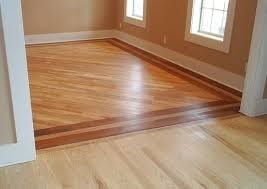A workbench is considered as the most basic, yet the most important tool that can be found inside a traditional workshop for woodworking. It is quite challenging to build furniture manually without the use of a good and sturdy workbench where you can build on. Whether you create your very first workbench, or buy one, it is very important to make sure that you know how to use them.
Doing so will allow you to enjoy your work, especially when dealing with hand tools. At the same time, there are also certain features that are important for all woodworkers, while there are also some that can fall under the category of preference. To help you out, we have created this guide on understanding workbenches for woodworking – how to use them. At the end of this guide, you will have a clearer understanding on how to use this very important tool in woodworking.
Features to Look For
Whether or not you are building your own workbench, or buying a new one, there are features that are very important to take into consideration. Understanding these features will help you come up with the right workbench.
Stability and Sturdiness

One very important feature that you need to take into consideration in a workbench design is that it should be stable and sturdy at the same time. Manual planning and sawing using an unstable workbench can be very difficult as your workbench shakes and moves all over the room.
In this way, a workbench with a 3-4 inches thickness of top will typically offer you with the right amount of mass that you need. There are certain workbench designs that offer sturdiness with its design, allowing you to avoid having a less massive slab top.
Good Quality of Vises

Good vises are very important in clamping your workpiece onto the workbench, allowing you to saw, plane or shape it in various ways. For standard workbench, having two standard wooden vises will be enough. Vises generally fall into two categories: the face vises, and the tail vises.
Face vises are pointed toward the user on the workbench face, while the tail vises are attached towards the workbench edge. These different kinds of vises also fall into these categories. Regardless of your choice, you can expect the best output of your woodworking project by having the best workbench you can ever have.
The Legs Need to Flush With the Top
Some commercial, and obviously cheaper workbenches have recently popped up in the market, and usually designed with a workbench top which overhangs its legs. This will just cause negative impact since you cannot clamp a door or long board in your left vise, clamping its other end against the legs. Therefore, it is very important to ensure that the legs flush with the workbench top front.
Appropriate Length, Width and Height

The dimensions of a standard workbench can be a matter of preference. However, generally speaking, a workbench top that is wider than about 24 inches is just too wide, which means that it is quite difficult to reach across. Having a longer workbench is better because it can give you the opportunity to work on pieces that are longer. If you do not have any gauge on this, check on the space that you have for your workbench and that will serve as the determining factor.
Workbench Designs
Understanding how to use workbenches for woodworking also means that you have to look closer into the different designs available for you to choose from. Among the most common designs include the Moravian Workbench, which can also be portable, depending on your preference. Another design is the Two Day Workbench with Christopher Schwarz. There are other popular designs on workbenches that are also available for you to choose from.
Conclusion
There is no need to emphasize further the importance of understanding the role that workbenches play in woodworking, and how to use them. By following the tutorial and guide above, you can better consider the features that should go into your workbench, and how they impact the quality of your woodworking project.
Did you like this article? If you are a woodworker, you may have other thoughts in mind, and suggestions as well. Feel free to share them in the comment section below. Share this article if you liked it too.






